We don’t drink much tequila. Most tequila on the US market is mass-produced and over-industrialized, which is a major a turnoff. While almost all tequila distilleries have seemingly lost their way with the use of diffusers and other chemical additives, there’s still a very small handful of producers that are making tequila the traditional way.
Siembra Spirits and Cascahuin
We were first introduced to the brand Cascahuin Tequila through David Suro. For those of you who don’t recognize that name, David has been an icon in the agave spirits community since the 1980’s when he opened the now famed Tequilas restaurant in Philadelphia. Upon opening the restaurant, he was immediately confronted with a grave issue: all of the tequila available in the northeast was crap. To fix this, he founded Siembra Spirits, an import company to bring quality tequila and agave spirits to the US market. He started off working on a project called Siembra Azul, which was produced by the Vivanco family at their distillery in Arandas, Jalisco. He then later expanded the Siembra label to the Valles region of Jalisco, to the very distillery where David first fell in love with tequila: Destilería Cascahuín.
We met David at an impromptu tasting in the back room of the Austin Wine Merchant in 2017. There were only 6 or 7 of us that could fit in the tiny room, which was filled to the ceiling with cases of spirits from around the world. David walked us through his line up, which by then included both tequila and his mezcal brand, Siembra Metl. He’s a brilliant photographer, and he showed us incredible portraits of the producers he works with, the distilleries where the spirits are made, and the delicate process behind each batch. He also boasts an incredible collection of night photography that he created, highlighting bats and their role in pollinating agave quiotes as part of the agave rebirth and regeneration process.
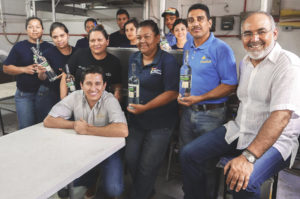
The Cascahuin team with the founder’s grandson, Chava, squatting at the table and David Suro on the far right. Photo courtesy of Siembra Spirits
While the tequilas we tasted with him were all phenomenal, there was a new project that he was particularly excited about. His idea was to bring together the beauty and elegance of the tequila produced by the Cascahuin team, which creates his Siembra Valles, with Emilio Vieyra, who producers several mezcals in his Siembra Metl line from Michoacán. The outcome is a one-of-a-kind ancestral batch of tequila like no other. To have a tequila distillery that was excited to take on an ancestral tequila project was a foreign concept at the time, and still is for the most part today. To our knowledge, no one else is doing a project quite like this.
A Tour of the Fabrica de Tequila, El Cascahuin
We found ourselves in Jalisco in May of 2022, exploring the diverse world of raicilla and destilado de agave in the region. While in the area, we thought it would be interesting, as mezcal heads, to visit a tequila distillery as well. Cascahuin had been on our radar for a long time, so we messaged them to setup a visit.
We arrived at the distillery immediately after visiting Caballito Cerrero. It was just after lunch time and our friend Pancho, who lives in Guadalajara, walked into the distillery like he owned the place. Everyone at Cascahuin seemed to know him, which as we’ve found out throughout our travels with him, is the case almost everywhere you go. He describes himself as a “fixer” and he is the co-owner of a restaurant named Farmacia Rita Perez in Guadalajara. He also works with several destilado brands in the area.
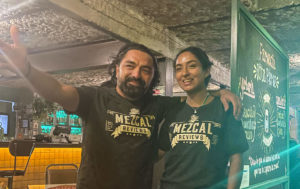
Pancho with his daughter at Farmacia Rita Perez.
We were greeted at the entrance of the distillery by Tetsu, who had been a professional mixologist in Tokyo, Japan for 14 years. During this time, he fell in love with tequila. He’s been working in production at Cascahuin since 2014 and he was to be our guide at the distillery for the afternoon. We were also greeted by Chava, whose full name is Salvador Rosales Trejo, the grandson of the founder of Cascahuin. Chava now runs the distillery with other members of the family involved.
Their family began producing tequila in 1904, and the current distillery was built in 1955. The buildings are mostly brick and masonry with somewhat isolated areas for each stage of production. The big takeaway from this tour was how many options Cascahuin has available to them at each step in the production process. Each release that they produce is a different recipe. That recipe is a combination of the region the agave was harvested, the method of cooking that is used on the agaves, the method of milling used on the agaves, the method of fermentation, and the method of distillation (as well as the method of barrel aging for reposados and anejos).
Cascahuin has (almost) every traditional option available at every stage of production. When cooking the agaves, they have 12 and 16 ton steam ovens, as well as mezcal-style underground conical pit ovens. Note that they did NOT have the industrial autoclaves and diffusers used by industrial tequila brands, which is awesome. After the agaves are cooked, by either method, they could be milled in three different ways: by mechanical shredder, by tahona, or by hand with axes and mallets.
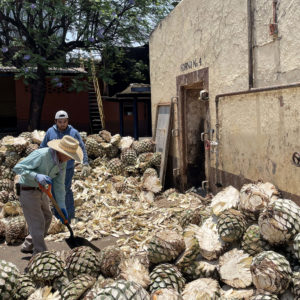
The Cascahuin team loading one of their steam ovens with freshly harvested agaves.
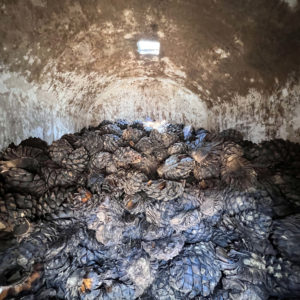
The inside of one of the steam ovens with cooked agaves.
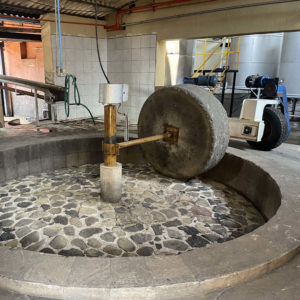
One of the tahonas used in some recipes.
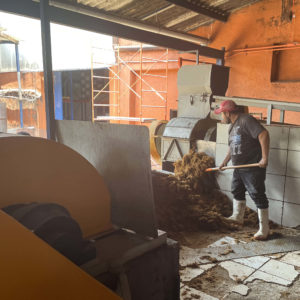
The mechanical shredder used in some recipes.
Once milled, the agave can be fermented in three different ways: in stainless steel containers, in cement pits, or in wooden tinas. Note that all fermentation is done with open air yeasts and warm water to help kickstart the sugar/yeast interactions. After fermentation, there are once again three options for distillation: They can distill in a steel column still, in a copper pot still, or in a wooden Filipino still. Lastly, for aging their reposados and anejos, they have myriad types of barrels available: from cognac brands, Jack Daniels, Bacardi, etc…
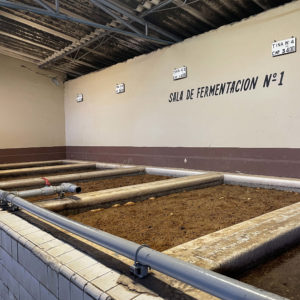
The cement fermentation pits used in some recipes.
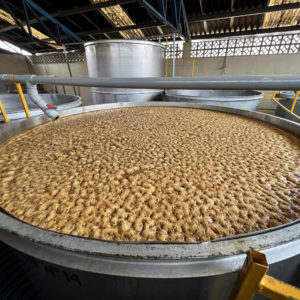
The steel fermentation tanks used in some recipes.
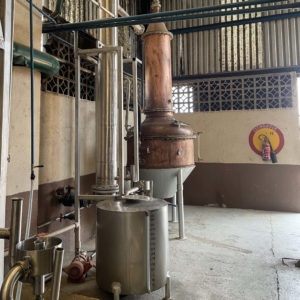
A still used in some recipes.
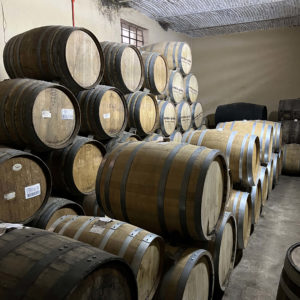
Some of the barrels used to age their reposado and anejo tequilas.
The decisions among these options at each stage of production are what make up each recipe of production. While most of the agaves they use are grown in their own fields, they do occasionally have clients who want a batch from a certain region, which requires agaves to be purchased at a hefty price. Tetsu told us that the price of agave in Jalisco has gone up 10x in the last 10 years, from 3 pesos per kilo to over 30 pesos.
Ancestral Tequila
Toward the end of the tour, Tetsu took us to the back of the open air distillery to see the Siembra Valles Ancestral production area, which is somewhat set aside from the other production methods. This ancestral production area is the realization of Chava and David Suro’s dream from several years ago. The team at Cascahuin dug a traditional conical pit oven (exactly the same as found in mezcal), they built a pit in the ground for hand-milling the agaves with axes and mallets, and they also built a Michoacán-style Filipino still for these special batches.
This type of ancestral tequila production had been largely forgotten, and Emilio Vieyra, the maestro mezcalero of Siembra Metl and Don Mateo Mezcal, assisted the Cascahuin team with the production of the first batch of this incredible ancestral tequila. To our knowledge, there are no other tequila projects that come anywhere close to this ancestral line, and we highly suggest that you try it. Sipping this tequila is like travelling back in time 100 years to before tequila first grew to fame, long before it’s modern industrialization. Tasting this spirit you can easily see why tequila became internationally renowned.
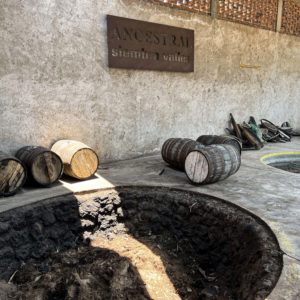
The area built for Siembra Ancestral production. Notice the pit oven for cooking agave and the shallow cement pit to the right, which is used for hand-milling the agave after they are cooked.
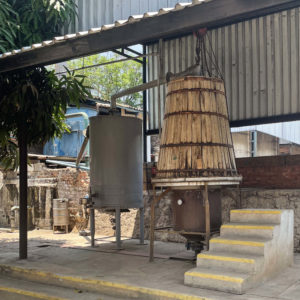
The Filipino still used to produce Siembra Ancestral.
Tetsu expressed that the first batch of the Siembra Valles Ancestral was very smoky as they were still trying to understand the full ancestral process within the context of tequila. More recent batches have had less smoke and more pure agave flavor.
Tequila Tasting with Chava
We finished our tour at an outdoor table that was stacked with tequila bottles, new and old. Chava graciously put out some special edition releases from his personal collection alongside the releases that Cascahuin makes on a recurring basis. Tetsu told us that this was not typical and that we were getting the “Pancho special.” The entire table was set with filled tasting flutes when we arrived.
Tetsu and Chava walked us through their regular releases, which were all phenomenal. We then began sipping from Chava’s private collection. He’d brought us two special releases, as he knew that we were interested in mezcal. One of them was called Cerro de Luz. The name Cascahuín arises from pre-Hispanic roots whose translation is “Cerro de Luz” or “Fiesta en el Cerro.” This means the “hill of light” or “party on the hill” and this specific batch was created using only agaves from a single mountainside that is visible from the distillery. The terroir of this batch is earthy and rich with minerals. It’s an incredible experience.
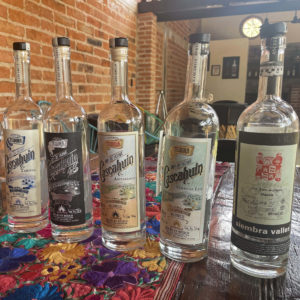
Several of the many bottles tasted with Chava.
The second special edition that Chava sipped with us was the Anniverario batch, which was made in honor of what would have been the founder, and Chava’s grandfather, Salvador Rosales Briseño’s 100th birthday a few years ago. This was the most velvety and delicate agave spirit I’ve ever tasted. It was easily the most elegant tequila I’ve ever had.
Drink Cascahuin
There aren’t many tequilas that we drink or recommend to friends, but Cascahuin is at the top of that list. We’re mezcal heads at heart, but if you have the opportunity to taste some Cascahuin, we highly recommend that you do so. For starters, try the Plata 48 or the Tahona releases. If you get a chance to taste the Ancestral from Siembra Valles, we highly recommend you don’t pass it up. You won’t be disappointed. They also produce for a few other tequila brands under NOM-1123. So if you see NOM-1123 on the side of another brand’s bottle, it’s probably worth a sip.


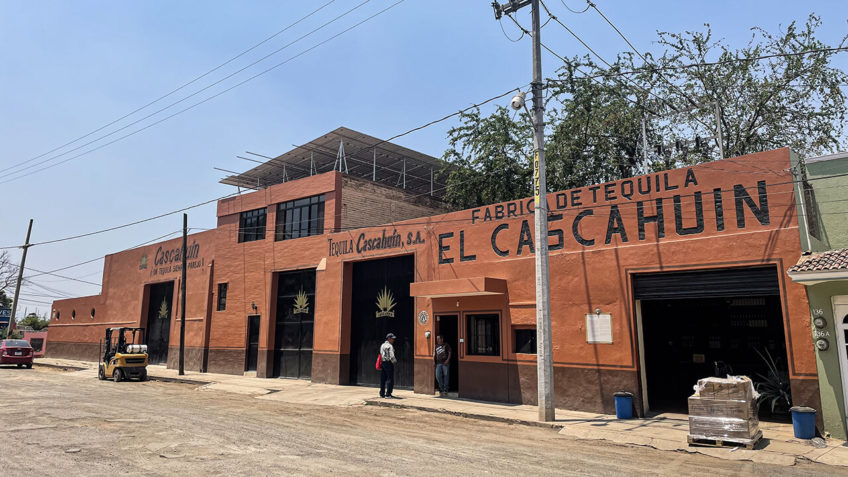

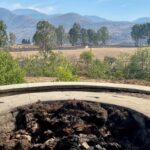
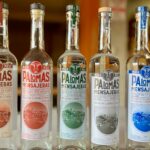
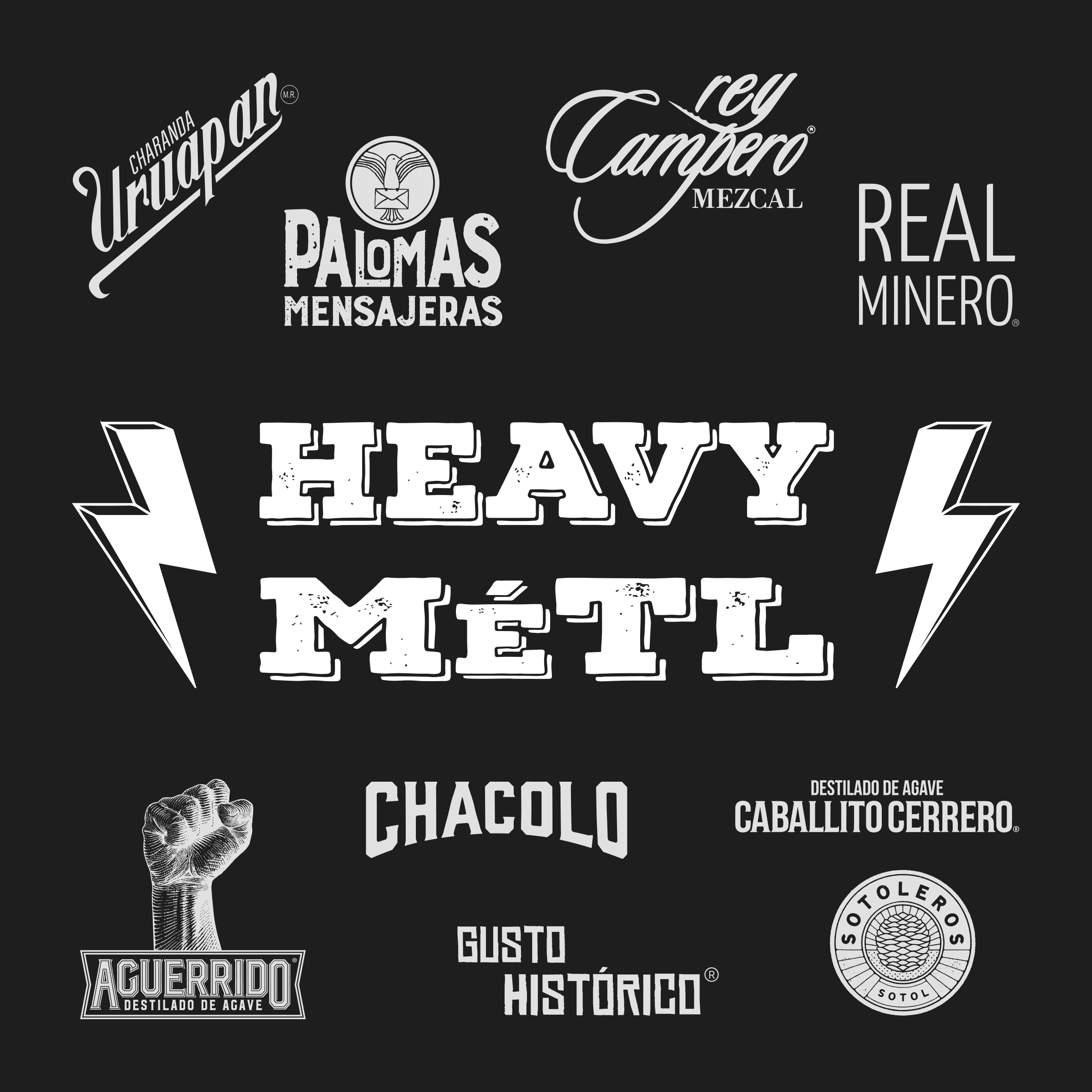
AdrianM
2 years agoJust reading this made me thirsty!
Great article and thanks for sharing. Cascahuin for me, along side Caballito Cerrero, are the epitome of how a tequila should be made and taste. Big fan of their high proofs.
JonnyAuthor
2 years agoYes. Agreed. They’re really doing it right!